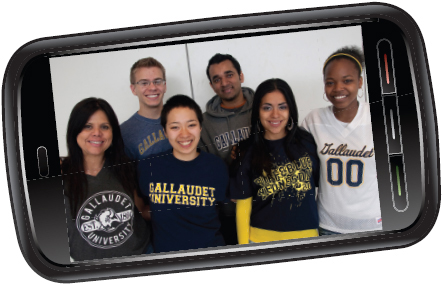Introduction with Student Profile
| 12 | Diversity |
IN THIS CHAPTER YOU WILL EXPLORE
The value of living in a diverse nation
The concepts of culture, ethnicity, race, religion, age, physical and learning ability, gender, sexuality, and economic status as they relate to diversity
The value of gaining knowledge about various groups
The role colleges play in promoting diversity
How to identify and cope with discrimination and prejudice on campus
Diversity is like a salad of people … mixed well.
Derrick Behm, 20,
Elementary Education major; Lakeishia Brown, 19,
Undecided major; Ikumi Kawamata, 22,
Social Work major; Kristy Ramos, 19,
Studio Art major; Krishneer Sen, 24,
Information Technology major;
and Zulma Sewell, 45, Deaf Studies major
Gallaudet University
Diversity can mean many things to many people. For the purposes of introducing this chapter, we spoke to a number of students about their personal experiences with the topic. We started at Gallaudet University in Washington, D.C.—a university founded for the deaf community—and asked six students to tell us about themselves, where they were from, why they decided to attend college, and how diversity has played a part in their lives, both in college and elsewhere.
The students range in ages from nineteen to forty-five and grew up in Fiji; the state of Georgia (among other places); Japan; New York City; Poughkeepsie, New York; and Puerto Rico. Some of the students chose Gallaudet because of the opportunities it offers deaf students, whereas others chose the school for its high-quality academics. Kristy is the first person in her family to go to college. She was born and raised in a deaf family and says, “The reason I decided to go to college was to show my family that if I can go to college, they can, too!” Some of the students were born deaf, while others became deaf later in life. Some grew up signing; others did not. Lakeishia identifies herself as hard of hearing. She chose Gallaudet because she knew that “communication between students and teachers through sign language would be easier.” Some were mainstreamed in grade school, others were homeschooled, and others went to schools for deaf children. The list of differences could go on and on, but each of them brings his or her own unique experience to Gallaudet, and each strives to learn about the differences and similarities among them.

We asked the students to talk a bit about diversity and how it has played a part in their education. Derrick believes that it is important to seek out other people and other opinions. He says, “Your view in life is one of billions. Get to know what your peers’ thoughts are!” Lakeishia, Kristy, and Zulma emphasize getting involved on campus so that you can learn to work with many people toward a common goal. As Kristy puts it, “Diversity brings language skills, new ways of thinking, and creative solutions to different problems.” Lakeishia mentions joining a summer program called Jumpstart that had participants from all different backgrounds. She says, “We worked together to reach our common goal, and when we were successful, it was as a group.” Zulma adds, “I learned so much from working with [one group] that I started to appreciate my own heritage.” Ikumi reminds us that diversity is international, adding, “The Internet and improved transportation mean that contact between countries is increasing. Diversity is various people, various skins, various backgrounds, various beliefs, various philosophies, and various cultures. Learning about diversity equals learning people skills.” Krishneer sums it all up: “Diversity is like a salad of people … mixed well.”
YOUR TURN
Discuss
Look around your classroom. What kinds of diversity do you see? What other kinds of diversity might exist but can’t be seen? Discuss with a classmate reasons some college students have an interest in diversity, both seen and unseen, and why other students avoid the topic. Share your ideas with the whole class.
These Gallaudet students had a great deal to say about diversity as shown by all the wonderful responses you’ve just read.
As demonstrated by the diverse group profiled here, a college or university serves as a microcosm of the real world, a world that requires us all to work, live, and socialize with people from various ethnic and cultural groups. In few settings do members of ethnic and cultural groups interact in such close proximity to one another as they do on a college campus. Whether you are attending a four-year university or a community college, you will be exposed to new experiences and opportunities, all of which can enhance learning and understanding.
Through self-assessment, discovery, and open-mindedness, you can begin to understand your perspectives on diversity. This work, although difficult at times, will intensify your educational experiences, personal growth, and development. Thinking critically about your personal values and belief systems will allow you to have a greater sense of belonging and make a positive contribution to our multicultural society.